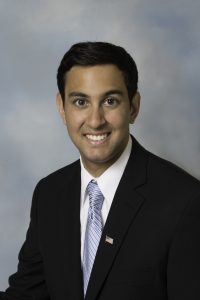Greg Jasani
November 8, 2017
At 1:42 pm on August 12th, 2017, a speeding car rammed into a group of protestors who had gathered in Charlottesville, Virginia, resulting in many injuries. In the ensuing hours, the University of Virginia Health System (UVAHS) would be called upon to provide care to all of the victims of the day’s violence. A recent article in ACEPNow, authored by some of the physicians there that day, details how UVAHS handled the sudden influx of critically injured patients. Their response to the day’s events, and the decisions made in the days before, provides an excellent example of how to provide critical care and coordination during a mass casualty event (MCE).
The emergency department at UVAHS had one advantage that many EDs facing a MCE do not; they had prior warning. The white supremacist rally, and expected counter rally, had been scheduled in advance. Due to this, the ED was able to take proactive steps to better prepare themselves for the anticipated surge in volume. The ED reviewed and updated their emergency notification procedures as well as each member’s roles in the medical care team. They also created two additional shifts around the event to increase the number of providers. Other departments that expected to be impacted by the protests (ie anesthesia and critical care) also underwent similar preparations.
Outside of the ED, the UVA hospital also took active steps to prepare for the increased surge. One of the areas that the hospital took active steps to optimize was capacity. The hospital leadership decided to limit non-urgent procedures 48 hours before the protests. Additionally, transfers into the hospital were also curtailed. These actions freed up significant inpatient space that allowed patients to move out of the ED faster. Also, additional patient care areas were created; the hospital lobby was converted into a triage area for the ED and an invasive radiology recovery area adjacent to the ED was used as an admissions holding area.
The ED also worked closely with community EMS, firefighter, and law enforcement personnel. In addition to reviewing and updating their operating procedures, UVAHS took the additional step of creating a command center to better coordinate everyone’s response to the event. The command center had an incident commander as well as general staff positions (ie, clinical operations, logistics, plans, public information, and communications), each responsible for their specific area of UVAHS function. The command center closely monitored events at the protests through radio, real-time video monitoring, and even social media. Thus, within three minutes of the car hitting the protestors, the command center was alerted and began coordinating the response.
Ten patients had to be admitted (to either the OR or critical care areas) and nine were treated and discharged by the ED. One woman, Heather Heyer, sadly died from her injuries in the ED. Yet perhaps the most astonishing thing about that day’s events was how little it impacted the operation of the UVA ED. While caring for the victims of the day’s violence, the ED continued to treat non-event patients with no real disruption of service. Additionally, within two hours of initial notification of the MCE, the ED returned to normal operations.
Unfortunately, violence came to Charlottesville and the ED had to provide urgent care to many seriously injured patients. Yet the ED managed to respond swiftly and likely kept the death rate from going higher than it did. While the skill and courage of the ED providers definitely deserve praise, it was the thorough planning and coordination that allowed the health system to react appropriately and operate smoothly during that time of high stress. This incident shows that, as much as possible, health systems should take pro-active steps to prepare themselves when it’s likely that a MCE will come to their community.
References
Brady W, Berry T, Ginsburg J, Iftikhar S, Izadpanah K, Lindbeck G, Sutherland S, O’Connor R. UVAHS Emergency Team Helps Victims in Charlottesville Tragedy. ACEPNow [Internet]. 2017 Oct 15. Available from: http://www.acepnow.com/article/uvahs-emergency-team-helps-victims-charlottesville-protest-tragedy/
Greg Jasani is a fourth year medical student at the GW School of Medicine & Health Sciences

